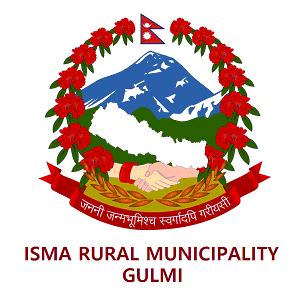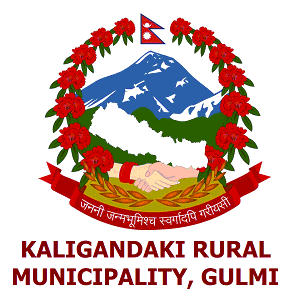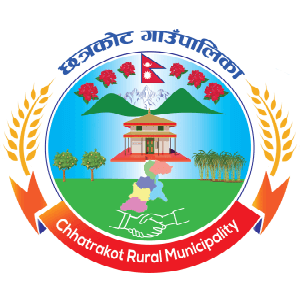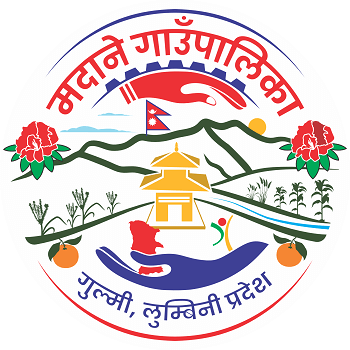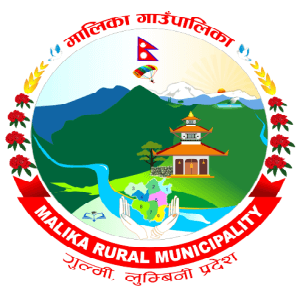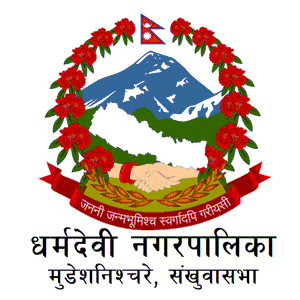Overview
Chandrakot Rural Municipality (Gaupalika - चन्द्रकोट गाउँपालिका, गुल्मी) is located at 28°06'36.4'' North latitude and 83°24'51.3'' East longitude. It is situated in Gulmi District with the following borders:
-
East: Kaligandaki Rural Municipality (Gulmi)
-
West: Musikot Municipality and Gulmidarwar Rural Municipality (Gulmi)
-
North: Bareng Rural Municipality and Galkot Municipality (Baglung)
-
South: Satyawati and Chhatrakot Rural Municipalities (Gulmi)
The total area of the rural municipality is 105.73 square kilometers. According to the 2021 census, the population is 18,662. Formed by merging eight former Village Development Committees (VDCs) — Divrung, Bishukharka, Harachaur, Shantipur, Gwaha, Harewa, Rupakot, and Turang — the rural municipality is divided into 8 wards. The municipal office is located at the former Shantipur VDC, now Chandrakot-4, inside the building of Chandrakot Campus.
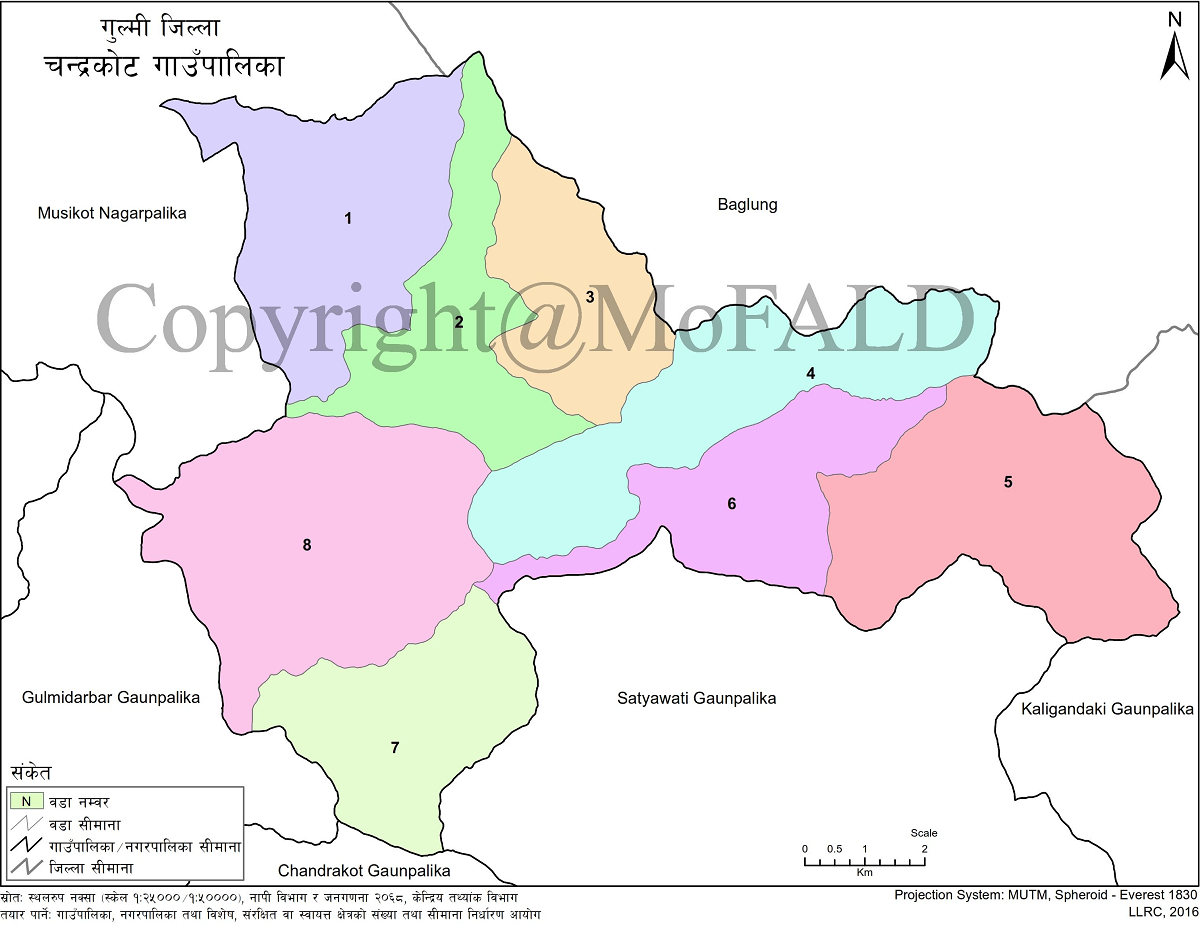
Historical and Cultural Significance
Chandrakot Rural Municipality is named after the renowned Chandrakot Temple. The region hosts several culturally and religiously important sites:
-
Chandrakot Temple
-
Divrung Temple
-
Chakreshwar Temple
-
Siddhababa Temple
-
Timure Lake, Dah Lake
-
Arjewa Waterfall
-
Picnic spots such as Patechaur and Rumale Danda
-
Hugdi Khola Hydropower Project
The area holds immense potential for tourism development due to its scenic natural resources, rivers, forests, and heritage sites. Ethnic groups residing here include Brahmin, Chhetri, Magar, Newar, Gurung, Bishwakarma, Muslim, and Kumal communities. Major income sources include agriculture, livestock, foreign employment, and trade.
Formation and Administrative Structure
As per the notice published in the Nepal Gazette dated 2073 Falgun 27 by the Government of Nepal, Chandrakot Rural Municipality was officially formed by merging the eight VDCs. It is one of the 753 local levels in Nepal. Positioned in northeastern Gulmi, its geographical setting significantly influences its development planning. The region experiences diverse climates due to its varying altitudes: colder in the north, warmer in the south.
Demographic Overview
According to the 2068 census, the total population was 21,827. The rural municipality comprises 4,596 households. The major ethnic groups include Brahmin, Chhetri, Magar, Kami, and Damai. Agriculture is the primary occupation, with high production of vegetables and oranges.
Household Distribution by Ward:
-
Ward 1: 450 households
-
Ward 2: 505 households
-
Ward 3: 406 households
-
Ward 4: 790 households
-
Ward 5: 455 households
-
Ward 6: 430 households
-
Ward 7: 720 households
-
Ward 8: 840 households
Geographical Characteristics
Geography plays a vital role in shaping the economic, social, physical, and environmental development of the region. With diverse topographical features including hills and valleys, Chandrakot has varying climates across different zones. Northern parts experience cold weather due to Himalayan influence, while southern areas are warmer.
Economic Development
Economic development is seen as a positive transformation driven by local needs and resources. It is influenced by culture, time, and place. Development planning is thus contextual to each locality.
Agriculture and Livestock
Agriculture and livestock are key pillars of Nepal's economic development. In Chandrakot, rice is the staple crop, followed by maize, wheat, and millet. The municipality is working to commercialize farming and has provided 50% subsidized mechanization support to farmers, about 89% of households rear animals.
-
Cattle: High interest in cow farming
-
Buffalo: Widely reared
-
Goat: Popular for meat production
-
Pig: Preferred due to efficient feed use and fast growth
-
Poultry: Increasing market demand for meat has attracted locals to poultry farming
Areas like Sota Faat, Majuwa, Gekhung, Shantipur, and Harewa are ideal for paddy farming, while Rupakot, Turang, Bishukharka, Gwaha, and Harachaur are suitable for commercial goat farming.
Industry and Trade
Economic activities include small-scale industries such as furniture, grills, bakeries, and noodle factories. Banking institutions, including commercial banks, are active in providing credit and accepting deposits. Stone quarrying in Bishukharka holds potential for economic contribution if properly managed.
Tourism
Tourism plays a key role in driving Nepal's economy. Chandrakot offers vast potential for tourism development with its natural lakes, rivers, forests, cultural sites, and biodiversity. Famous festivals celebrated here include:
-
Dashain, Tihar
-
Matatirtha Aunsi
-
Buddha Jayanti
-
Guru Purnima
-
Saune Sankranti
-
Nag Panchami
-
Janai Purnima
-
Krishna Ashtami
-
Teej
-
Chhath, Lhosar
-
Shivaratri, Holi
Social Development
Social development covers education, health, and community mobilization. Community-based groups such as mothers' groups, youth clubs, and savings groups play an active role. Investments in education and health are crucial for improving human capital.
Education and Health
Education is central to human development. The municipality has approved the establishment of 15 new Early Childhood Development (ECD) centers and manages KG classes in 38 community schools. Schools with low teacher quotas and those operating English-medium classes are supported with grants.
ICT and Laboratory Support:
-
Science labs in 4 secondary schools
-
Libraries in 4 secondary schools
-
ICT labs funded in 4 secondary schools
-
Toilet facilities built in 6 schools
Infrastructure:
-
Federally funded 4-room building: 1 unit
-
NRA-funded 4-room buildings: 7 units
-
Truss buildings: 4 (3-room), 2 (2-room)
-
Toilets: 2 units
-
Lumbini Province-funded buildings: 2 (4-room), 1 (2-room), 1 (2-room toilet)
Salary support has been provided to low-wage ECD facilitators, KG teachers, school assistants, and helpers. Legal and procedural frameworks have been established to organize educational operations systematically.
The municipality fully manages final exams for Grades 5 and 8. Question papers for other grades' terms and final exams are also centrally prepared and distributed.
Healthcare System
The rural municipality has been prioritizing community health and preventive care. Key aspects include:
-
Regular health camps in remote wards
-
Maternal and child health initiatives
-
Immunization programs covering key age groups
-
Health posts equipped with basic diagnostic tools
-
Coordination with provincial health departments for the medicine supply
-
Public awareness campaigns on sanitation, nutrition, and hygiene
Efforts have been made to recruit skilled health personnel and to improve service delivery. Focus is placed on reducing maternal and infant mortality, ensuring regular antenatal care, and promoting institutional deliveries to improve outcomes.
Schools in Chandrakot Rural Municipality
School Summary
-
Pre-schools: 40
-
Basic Schools: 42
-
Secondary Schools: 10
-
Plus-2 Schools: 6
-
Public Schools: 40
-
Private Schools: 3
-
Technical School: 1
-
Total Schools: 43
Private Schools (Nursery to Basic/Secondary Level)
-
Chakreshwor English Boarding School – Nursery to Grade 10, Chandrakot
-
Bhanu Secondary English Boarding School – Nursery to Grade 10, Chandrakot
-
Polaris Secondary Boarding School – Nursery to Grade 8, Chandrakot
Public Secondary and Plus-2 Schools
-
Udaya Secondary School – Grade 1 to 12 (NEB), Shantipur, Chandrakot
-
Sharada Secondary School – Grade 1 to 12 (NEB), Sarang, Dibrung, Chandrakot
-
Gyanodaya Secondary School – Grade 1 to 12 (CTEVT), Chandrakot
-
Saraswati Secondary School – Nursery to Grade 12, Chandrakot
-
Gwagha Secondary School – Nursery to Grade 12, Chandrakot
-
Sharada Secondary School – Nursery to Grade 12, Chandrakot
-
Janata Bal Niketan Secondary School – Nursery to Grade 10, Chandrakot
-
Harrachaur Secondary School – Nursery to Grade 10, Chandrakot
Technical School
-
Gyanodaya Secondary School – Grade 1 to 12 (CTEVT), Chandrakot
Public Basic Schools
-
Ramkot Basic School – Nursery to Grade 5, Chandrakot
-
Indrachok Basic School – Nursery to Grade 5, Chandrakot
-
Janata Basic School – Nursery to Grade 8, Chandrakot
-
Himalaya Basic School – Nursery to Grade 8, Chandrakot
-
Bharati Basic School – Nursery to Grade 8, Chandrakot
-
Bal Kalyan Basic School – Nursery to Grade 6, Chandrakot
-
Baljyoti Basic School – Nursery to Grade 5, Chandrakot
-
Hira Bhawan Basic School – Nursery to Grade 5, Chandrakot
-
Harewa Basic School – Nursery to Grade 8, Chandrakot
-
Bhima Basic School – Nursery to Grade 5, Chandrakot
-
Dandaban Basic School – Nursery to Grade 5, Chandrakot
-
Balbodh Basic School – Nursery to Grade 8, Chandrakot
-
Ne Ra Chandrodrodaya Basic School – Nursery to Grade 5, Chandrakot
-
Saraswati Basic School – Nursery to Grade 5, Chandrakot
-
Bhumisthan Basic School – Nursery to Grade 5, Chandrakot
-
Khadkadeb Basic School – Nursery to Grade 4, Chandrakot
-
Mahendra Basic School – Nursery to Grade 5, Chandrakot
-
Bal Bikash Basic School – Nursery to Grade 3, Chandrakot
-
Jana Jyoti Basic School – Nursery to Grade 5, Chandrakot
-
Jana Sahayog Basic School – Nursery to Grade 3, Chandrakot
-
Janata Basic School – Nursery to Grade 2, Chandrakot
-
Udaya Basic School – Nursery to Grade 5, Chandrakot
-
Kisikot Basic School – Nursery to Grade 5, Chandrakot
-
Chandisthan Basic School – Nursery to Grade 5, Chandrakot
-
Saraswati Basic School – Nursery to Grade 3, Chandrakot
-
Jhapak Basic School – Nursery to Grade 3, Chandrakot
-
Kalika Basic School – Nursery to Grade 3, Chandrakot
-
Narmada Basic School – Nursery to Grade 5, Chandrakot
-
Santoshimata Basic School – Nursery to Grade 3, Chandrakot
-
Santoshi Basic School – Nursery to Grade 3, Chandrakot
-
Devisthan Basic School – Nursery Level, Chandrakot
-
Jharana Basic School – Nursery to Grade 2, Chandrakot


